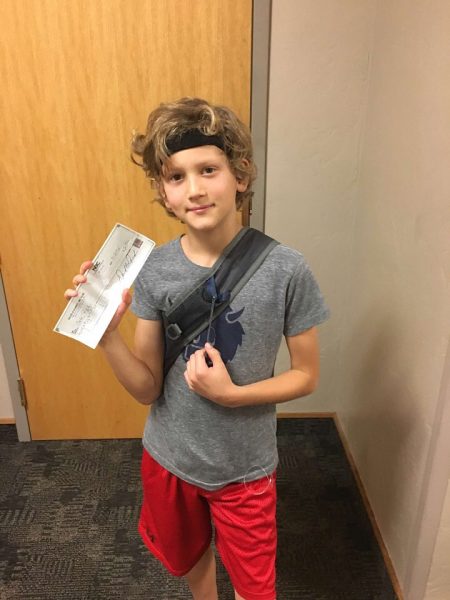One mom’s quest for Sugar Surfing Success!

By Megan Rose, mom of a child with T1D
Dr. Stephen Ponder is a pediatric endocrinologist who has lived with Type 1 Diabetes for around 50 years. I learned that Diabetes Solutions of Oklahoma was bringing him to Oklahoma City just days before my son and I were planning to drive to see him speak in Wichita.
I was so excited to find out he was coming here, because I have learned so much from his book, Sugar Surfing.
Our son Tate was diagnosed with type 1 diabetes at eight years old in December of 2015. I think everyone can remember their first few days and weeks of their new life with type 1 diabetes. There is so much to learn, and so many mistakes to be made, all while trying to stay as close as possible to that magical number without going too high or too low.
Not long after diagnosis, we started experimenting (and found a lot of success) with pre-bolusing. One night I was googling how to pre-bolus for sushi and I read about someone’s successful experience with pre-bolusing and Sugar Surfing for sushi. I was instantly intrigued when I read about their experience.
Early on, we found that the basic rule of fifteen carbs to correct a low would over-correct Tate, so we treated lows with four to six carbs instead of fifteen to avoid the rebound high. I felt like we had pretty good control over not going too low, but I was always discouraged when the CGM graph climbed higher and higher. One reason that happened was because we had Tate’s high alert set at 240. If we weren’t watching the graph, by the time we realized he was climbing, we were fighting the high plus the insulin resistance that comes along with that.
One of the first and easiest things we learned from Sugar Surfing was to look at the CGM often (several times per hour), and to lower the high alert so that we would be notified before he reached the 200’s. Once we lowered Tate’s high alert, we could see trends and if we found that he was trending up, we could use small doses of insulin to try to nudge the CGM line and get it headed back down.
Sugar Surfing forces us to be very proactive with Tate’s doses and corrections, but the results we have seen so far have been encouraging. Sometimes we have great days, and sometimes we feel like we fail greatly. That is why I’m excited to hear Dr. Ponder speak and learn more about how to continue to use these “micro adjustments” to see more of the steady blood sugar levels that Dr. Ponder himself experiences using this method.
I hope our community will welcome him with excitement! Thank you, Kim and DSOK, for bringing him to Oklahoma to speak and teach us how to take better control of T1D!
